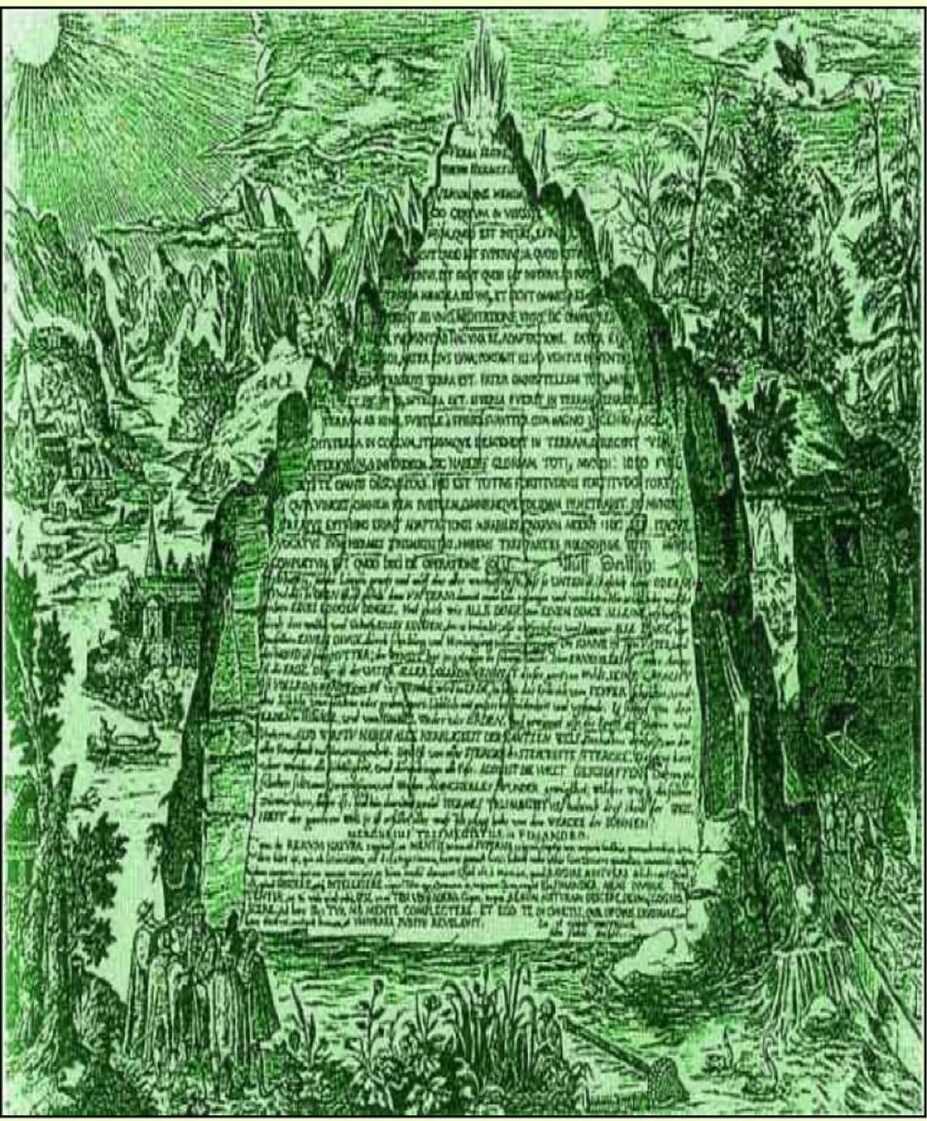Search your article
Emerald Tablet
The Emerald Tablet
The Emerald Tablet (or in Latin, Tabula Smaragdina) is a short text considered to be a cornerstone of the Hermetic movement and fundamental to the Art of Alchemy. Alchemical writings sometimes reference it by a variant title: The Secret of Hermes. Its putative author is Hermes Trismegistus (Hermes the Thrice-Great), a legendary Egyptian adept named after the Greek god of occult wisdom. The origin of the Emerald Tablet is lost in antiquity, and there is no recorded history as to its place of creation or the name of the actual author. Scholars and philosophers have been aware of it since the 10th century.
In the 14th century, the alchemist Ortolanus wrote a substantial exegesis on “The Secret ofHermes,” which was influential on the subsequent development of alchemy. Many manuscripts of this copy of the Emerald Tablet and the commentary of Ortolanus survive, dating at least as far back as the 15th century.
Medieval and early modern alchemists associated the Emerald Tablet with the creation of the philosophers’ stone.
It has also been widely popular with nineteenth and twentieth century occultists and esotericists, among whom the expression “as above, so below” (a modern paraphrase of the second verse of the Tablet) has become an often cited motto.
A Latin copy of the Emerald Tablet was included among the alchemical papers of Isaac Newton. The manuscript was in Newton’s own hand.
C.G. Jung identified “The Emerald Tablet” with a table made of green stone that he encountered in the first of a set of his dreams and visions beginning at the end of 1912, and climaxing in his writing the Seven Sermons to the Dead in 1916. The ideas contained in the Hermetic text are consistent with the enantiodromian processes characteristic of Jungian individuation.
Emerald Tablet Text (English Translation)
Tis true without lying, certain and most true.
That which is below is like that which is above and that which is above is like that which is below
to do the miracle of one only thing
And as all things have been and arose from one by the mediation of one: so all things have their birth from this one thing by adaptation.
The Sun is its father, the moon its mother,
the wind hath carried it in its belly, the earth is its nurse.
The father of all perfection in the whole world is here.
Its force or power is entire if it be converted into earth.
Separate thou the earth from the fire,
the subtle from the gross
sweetly with great industry.
It ascends from the earth to the heaven and again it descends to the earth
and receives the force of things superior and inferior.
By this means you shall have the glory of the whole world and thereby all obscurity shall fly from you.
Its force is above all force,
for it vanquishes every subtle thing and penetrates every solid thing.
So was the world created.
From this are and do come admirable adaptations where of the means is here in this.
Hence I am called Hermes Trismegistus, having the three parts of the philosophy of the whole world.
That which I have said of the operation of the Sun is accomplished and ended.
—Isaac Newton. [3]
Tabula Smaragdina in Thelema [1]
In his Confessions, Aleister Crowley described the Emerald Tablet as a “sacred text in Greek” (672). In his 1917 essay “The Revival of Magick,” he explained the Tablet as follows:
- That is to say, in order to perform his miracle, [the Magician] must call forth his own God in the Microcosm. That is united with the God of the Macrocosm by its likeness to it; and the Macrocosmic force then operates in the Universe without as the Magician has made it operate within himself; the miracle happens. (14)
- And as the macrocosm is the greater, it follows that what one does by magick is to attune oneself with the Infinite. (18)
Crowley associated the formulae of the Emerald Tablet with certain Qabalistic conundrums. He paraphrased the Emerald Tablet briefly in his glossary entry for Kether in the first volume of Book Four, and quoted the same portion in a description of Tiphareth in “The Magical Theory of the Universe” (Chapter 0 of Magick in Theory & Practice).
In Liber Samekh Crowley writes of the “Table of Emerald,” as referencing
- That One Substance … whose virtue it is to unite all opposite modes of Being, thereby to serve as a Talisman charged with the Spiritual Energy of Existence, an Elixir or Stone composed of the physical basis of Life … this Eucharist, which createth, sustaineth and redeemeth all things. (Magick, 525)
